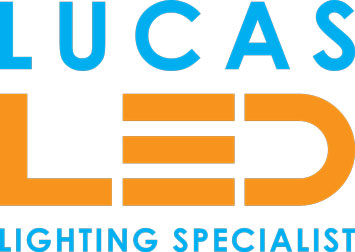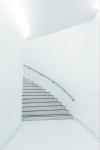How to light a home office?

What are the challenges of home office lighting?
Despite being in essence just a work space, home office requires more than just task lighting in the form of a small desk lamp. It's one of the spaces that needs layered lights - a mix of different types of lighting that can match your current needs on the fly. The trick is to keep it all well-balanced without overdoing it - excessive illumination is as bad as a dark office space. Choosing suboptimal lighting conditions can put great strain on the eyes, which in turn can have very unpleasant long-term effects on our health.
What types of lighting should you use?
A good lighting for home office space should utilize at least three subtypes - general lighting, task lighting and accent lighting.
General lighting
The primary source of light, providing you with much-needed ambient light. If possible, set up your home office in a room that has access to large amounts of natural light - best home office lighting should utilize it as much as possible. Why bother with that? The answer is simple - this form of light is the most comfortable for our eyes. Your desk shouldn't get direct sunlight, though - the glare can be too harsh for the eyes, especially if it bounces off a reflective surface, e.g., your computer screen or a car parked outside.
When there's not much natural light available, or you simply like to work in the evening, add overhead lighting. A single central ceiling lamp can be enough if it's able to provide even lighting for the whole office space. But if you can afford it, consider using a few smaller lamps (e.g., recessed lights) placed evenly across the whole ceiling. Just remember not to put the light source directly overhead - it would make the light bounce off your screen (or even the desk) straight into your eyes. If possible, always put your desk in a spot that provides parallel ambient light.
Another valid option for general ambient lighting is a bigger floor lamp with adjustable neck. It's a more portable solution that comes in handy when you can't move the desk or get sufficient light from the ceiling lamps.
When choosing lighting fixtures, remember that the provided light should be diffused for the most comfortable ambience. Dimmable lamps are also an excellent option - when paired with dimmable LED bulbs, they allow you to adjust the light's brightness to your needs. Avoid fluorescent bulbs and tubes - they produce harsh light that can interfere with our internal clocks or even sleep patterns due to high concentration of blue-green light wavelengths. They are the true bane of office lighting - simply replacing them with softer lights can work wonders for productivity and overall mood. Unfortunately, many office buildings still use them as main sources of light.

Task lighting
This layer of lighting provides your workspace with targeted/directional illumination. The easiest solution would be an adjustable LED table lamp that can be easily switched on/off, especially a dimmable one - not all tasks require bright light. As a plus, they come in many styles that will help you personalize your space while keeping it practical.
Depending on the amount of space you have, task lighting can be provided by gooseneck desk lamps of various sizes or wall-mounted swing-armed ones with flexible heads. For small desks, consider using a clip-on desk lamp that can be easily moved and fixed to the desk's edges.
For the best results, pick a desk lamp that illuminates without producing glare.
Accent lighting
Accent lights work mainly as the mood setters - they make the space more aesthetically pleasing, which makes it easier to feel good in your work space. It's especially helpful if your home office is completely cut-off from natural lighting or soothing views. With a bit of artificial lighting magic, you can create a cosy space that'll make it easier to get through a busy office day.
The best part about accent lighting is that it doesn't have to be something overly fancy. A simple LED wall light that highlights your favourite decor feature or a few well-placed LED strip lights can help you stay inspired during the working hours.
Even the light source itself can add much to the visual effects - pendant lights or picture lights can have some awe-inspiring designs. The same goes for wall sconce lights and decorative standing lamps.
This type of ambient lighting is also a great way to add some warmer colour temperature lighting. It's not the task light that should be kept in the colder ranges to keep you focused on the task at hand. The main goal here is to feel good in the space you spend a large portion of the day in.
Important factors to consider while lighting up your home office
To wrap things up, let's look into a few important rules referring to light sources and their correlation with computer work in home offices.

Keeping it bright
When it comes to brightness, both excess and lack of it will lead to eye strain - you should keep it balanced and spread throughout the room evenly. In a dim lit room, the brightest light source would be your computer screen. At first, sitting in the dark might seem pleasing, but later on your eyes will get very tired. It's hard to point out an exact light's intensity that will work every time - the only way to find the best light for your personal preferences is to test it yourself. That's why dimmable lights are the most convenient option. Although, keep in mind that the suggested range of summed light output for lighting in home offices is 3 000 to 6 000 Lumens.
Screen glare
Your computer screen, especially when you reduce its brightness or the environment is excessively bright, is prone to create reflections and glare.
This means that you should avoid placing light sources directly behind you, straight overhead or moving the desk lamp too close to the screen. Instead, consider placing them further away or use fabric shades/frosted glass diffusers to soften their light. This will help in eliminating the glare.
To avoid glare and make sure nothing will get reflected on your screen, keep your field of vision illuminated with evenly spread, diffused light, while keeping the remaining space darker. In this setting, there's no way for the objects behind you to be reflected on the screen.
For the same reason, you shouldn't place lights and reflective objects behind your screen.
Lighting vs video calls
If making video calls or taking part in online conferences is part of your home office job, you should be aware that the right light is as important as a good quality webcam and fast internet connection.
Again, don't place bright lights directly behind you. Not only will the webcam detect it as the brightest light in the room (and adjust the whole set to it), but also will make you look harsh and unflattering due to being backlit.
In ideal conditions, the light should be placed in front of you and be directed on your face - this will ensure the camera stays focused on you and not the background. This might be problematic, as the light shouldn't be placed behind your computer. This can be negated by using a tiltable, dimmable desk lamp, but by far the best lighting for conference calls etc. would be a ceiling lamp that aims at your face at a 45° angle.
How to illuminate your home office - final thoughts
Ideal home office lighting is a mix of general, accent, and task lighting - keeping the light layered is an easy way to make it adjustable to changing working environment conditions and current tasks. You should also remember to utilize natural light as much as possible - it'll help you stay focused, work effectively and maintain your day cycle. Due to their flexibility, dimmable LED lights are definitely a worthwhile investment - you can easily adjust them to your needs, and they last for long. The sheer number of lighting products can be overwhelming, and choosing them can be a very time-consuming task. If you encounter any problems in choosing lighting for your home workspace, feel free to contact us. Here at LucasLED we can help you find the best fitting fixtures and bulbs, as well as guide you through installing them and adding accessories.














